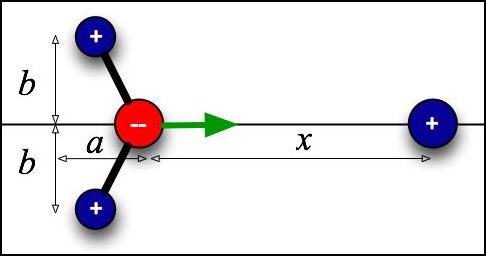Week 1 |
Recitation:
How big is a worm? |
Surveys and Lab 0:
Intro and setup |
| 8/29 |
1 |
1 Introduction to the class
1.1 The
disciplines: Physics, Biology, Chemistry, and
Math
1.1.1 Science as making models
1.1.4 What
Physics can do for Biologists
1.2 Thinking about Thinking and Knowing
1.2.1 The nature of scientific knowledge
1.2.3 Knowing-how-we-know icons |
|
Why is this class different? |
|
| 8/31 |
2 |
2. Modeling
with mathematics
2.1 Using
math in science
2.1.1 How
math in science is different from math in math
2.1.2 Measurement
2.1.3 Dimensions
and units
|
|
Measurement and Math:
|
|
| 9/2 |
3 |
2.1.3.1 Complex
dimensions and dimensional analysis
2.1.3.2 Changing units
2.1.4 Estimation
2.1.4.3 Useful
numbers
2.2.3 The idea of algebra: unknowns and relationships
2.2.3.1 Symbols in science
|
|
Coordinates, graphs, and vectors
|
|
Week 2 |
No recitation |
No lab |
| 9/5 |
|
LABOR DAY (no class)
|
|
|
|
| 9/7 |
4 |
3.1.1 Coordinates
3.1.2 Vectors
3.1.3 Time
3.1.4 Kinematics
Graphs
2.2.5 Values,
change, and rates of change
2.2.5.1 Derivatives
|
|
Rate of change and velocity
|
Quiz 1 |
| 9/9 |
5 |
2.2.5.1.1 What
is a derivative, anyway?
3.2 Kinematic
Variables
3.2.1 Velocity
3.2.1.1 Average
velocity
3.2.1.2 Instantaneous velocity
3.2.1.3 Calculating with average velocity |
|
Instantaneous and average velocity
|
|
Week 3 |
Recitation:
The cat and the antelope |
Lab 1.1:
Quantifying motion from Images and Videos |
| 9/12 |
6 |
3.2.2 Acceleration
3.2.2.1 Average
acceleration
3.2.2.2 Instantaneous acceleration
3.2.2.3 Calculating
with constant acceleration
3.2.3 Kinematics graphs and consistency
3.2.3.1 Reading the content in the kinematics equations
|
|
Graphs & consistency; acceleration
|
Quiz 2 |
| 9/14 |
7 |
4.1 Newton's
Laws
4.1.1 Physical
content of Newton's Laws
4.1.1.1 Object
egotism:
4.1.1.2 Inertia
4.1.1.3 Interactions
4.1.1.4 Superposition:
4.1.1.5 Mass
4.1.1.6 Reciprocity |
|
Physical content of Newton's laws
|
|
| 9/16 |
8 |
4.1.2 Formulation of Newton's laws as foothold principles
4.1.2.2 Newton
0
4.1.2.2.1 Free-body
diagrams
4.1.2.2.2 System
Schema Introduction
|
|
What's a force? Newton 0 & 1
|
|
Week 4 |
Recitation:
Forces for objects & systems
|
Lab 1.2:
Quantifying motion from Images and Videos |
| 9/19 |
9 |
4.1.2.3 Newton's 1st law
4.1.2.4 Newton's
2nd law
4.1.2.4.1 Reading the content in Newton's 2nd law
4.1.2.4.2 Newton 2 as a stepping rule
|
|
Newton 2
|
Quiz 3 |
| 9/21 |
10 |
4.1.2.5 Newton's
3rd law
4.1.2.5.1 Using
system schemas for Newton's 3rd law
4.1.2.5.1 Center of mass |
|
Newton 3
|
|
| 9/23 |
11 |
4.1.2 Formulation
of Newton's Laws as foothold principles
4.1.2.1 Quantifying impulse and force |
|
The Impulse-Momentum Theorem
|
|
Week 5 |
Recitation:
The spring constant of DNA |
Lab 2.1:
Inferring force characteristics from motion analysis |
| 9/26 |
12 |
4.2 Kinds of Forces
4.2.1 Springs
4.2.1.1 Realistic springs
4.2.1.2 Normal forces
4.2.1.2.1 A
simple model of solid matter
4.2.1.3 Tension
forces
|
|
Forces: Springs, tension, and
normal forces
|
Quiz 4 |
| 9/28 |
13 |
4.2.2 Resistive
forces
4.2.2.1 Friction
4.2.2.2
Viscosity
4.2.2.3 Drag |
|
Resistive
forces: Viscosity & drag
|
|
| 9/30 |
14 |
4.2.3 Gravitational
forces
4.2.3.1 Flat-earth
gravity
4.2.3.1.1 Free-fall
in flat-earth gravity
4.2.3.3 The
gravitational field |
|
Gravity
|
|
Week 6 |
Recitation:
Propelling a paramecium |
Lab 2.2:
Inferring force characteristics from motion analysis |
| 10/3 |
15 |
4.2.4 Electric
forces
4.2.4.1 Charge
and the structure of matter
4.2.4.2 Polarization
4.2.4.3 Coulomb's
law |
|
Electric force and polarization
|
Quiz 5 |
| 10/5 |
16 |
3.1.2.1 Adding vectors
3.1.2.1.1 Vector addition
3.1.2.1.2 Vector subtraction |
|
Vectors |
|
| 10/7 |
17 |
|
|
MIDTERM 1 |
|
Week 7 |
Recitation:
Electric force and Hydrogen bonding
|
Lab 3.1:
Observing Brownian motion |
| 10/10 |
18 |
4.2.4.3 Coulomb's
law
4.2.4.3.1 Coulomb's
law -- vector character
4.2.4.3.2 Reading
the content in Coulomb's law
4.2.4.4 The
Electric field
|
|
Coulomb's law
|
|
| 10/12 |
19 |
|
|
Go over midterm |
|
| 10/14 |
20 |
4.3 Coherent
vs. random motion
4.3.1 Linear
momentum
4.3.1.1 Restating
Newton's 2nd law: momentum
|
|
Coherent motion: Momentum
|
|
Week 8 |
Recitation:
Electrophoresis |
Lab 3.2:
Observing Brownian motion |
| 10/17 |
21 |
4.3.1.2 Momentum
conservation |
|
Momentum conservation
|
Quiz 6 |
| 10/19 |
22 |
1.1.3 Reductionism and emergence
4.3.2 The
role of randomness: Biological implications
4.3.3 Diffusion
and random walks
|
|
Random motion and emergence
|
|
| 10/21 |
23 |
4.3.3.1 Fick's
law
4.3.3.1.1 Reading
the content in Fick's fist law
|
|
Diffusion and Fick's law
|
|
Week 9 |
Recitation:
Cell polarization and activation |
Lab 3.3:
Observing Brownian motion |
| 10/24 |
24 |
5. Macro models of matter
5.1.1 Density-solids
5.1.2 Young's modulus
5.1.6 Soft matter
5.1.6.1 Mechanical properties of cells |
|
Solids and soft matter
|
Quiz 7 |
| 10/26 |
25 |
5.2 Fluids
5.2.1 Pressure
I-2 The micro-macro connection
7.1 Kinetic
theory: the ideal gas law |
|
Basics of fluids: Pressure
|
|
| 10/28 |
26 |
5.2.2 Archimedes'
Principle
5.2.3 Buoyancy
|
|
Fluid statics: The gas law
|
|
Week 10 |
Recitation:
Gas properties and pressure |
Lab 4.1:
The competition between Brownian motion and directed forces |
| 10/31 |
27 |
5.2.5.2.1 Surface
tension
5.2.5.2.1.1 Example:
The Laplace Bubble Law
|
|
Fluid statics: buoyancy
|
Quiz 8 |
| 11/2 |
28 |
5.2.6 Fluid
flow
5.2.6.1 Quantifying
fluid flow
5.2.6.2 The
continuity equation |
|
Fluid flow
|
|
| 11/4 |
29 |
5.2.6.3 Internal
flow -- the HP equation |
|
Fluid flow with resistance
|
|
Week 11 |
Recitation:
Fluid flow
|
Lab 4.2:
The competition between Brownian motion and directed forces |
| 11/7 |
30 |
6. Energy:
The Quantity of Motion
6.1 Kinetic
energy and the work-energy theorem
6.1.1 Reading
the content in the Work-Energy theorem |
|
Work and kinetic energy: Gravity
|
Quiz 9 |
| 11/9 |
31 |
6.2 Energy
of place -- potential energy
6.2.1 Gravitational
potential energy |
|
Potential energy: Gravity
|
|
| 11/11 |
32 |
|
|
MIDTERM
2 |
|
Week 12 |
Recitation:
Energy skate park |
Lab 5.1:
Motion and Work in living systems |
| 11/14 |
33 |
6.2.2 Spring
potential energy
6.2.3 Electric
potential energy
|
|
Potential energy:
Spring and electric
|
|
| 11/16 |
34 |
|
|
Go over midterm |
|
| 11/18 |
35 |
6.3 The
conservation of mechanical energy
6.3.1 Interpreting
mechanical energy graphs
|
|
Mechanical energy: Conservation
|
|
Week 13 |
No recitation
|
No lab |
| 11/21 |
36 |
6.3.2 Mechanical
energy loss -- thermal energy
6.3.3 Forces
from potential energy
3.1.2.3 The
gradient: a vector derivative
|
|
Loss of mechanical
energy
|
|
Week 14 |
Recitation:
Protein folding
|
Lab 5.2:
Motion and Work in living systems |
| 11/28 |
37 |
6.4.1 Energy
at the sub-molecular level
6.4.2 Atomic
and Molecular forces
6.4.2.1 Interatomic
forces
6.4.2.1.1 The
Lennard-Jones potential
6.4.2.2 Chemical
bonding |
|
Electric PE
|
Quiz 10 |
| 11/30 |
38 |
5.3 Heat
and temperature
5.3.2 Thermal
properties of matter
5.3.2.1 Thermal
energy and specific heat |
|
Electric PE and Atomic forces
|
|
| 12/2 |
39 |
5.3.2.2 Heat
capacity
5.3.2.3 Heat
transfer
|
|
Atomic and molecular forces
|
|
Week 15 |
Recitation:
The Laplace Bubble Law
|
Makeup labs and surveys |
| 12/5 |
40 |
I-2: Interlude
2: The Micro to Macro Connection
|
|
Thermal Energy and heat
|
Quiz 11 |
| 12/7 |
41 |
7. Thermodynamics
and Statistical Physics
7.2.3 Thermodynamic equilibrium and equipartition
7.3 The
1st law of thermodynamics
|
|
Heat flow
|
|
| 12/9 |
42 |
7.3 The
2nd Law of Thermodynamics
7.3.1 The
2nd Law of Thermodynamics: A Probabilistic Law
7.3.2 Implications
of the Second Law of Thermodynamics |
|
First law of thermodynamics
|
|
Week 16 |
|
|
| 12/12 |
43 |
No reading for the last day |
|
Review for exam
|
|
Exam Week |
|
|
| 12/16 |
Time: |
6:30-8:30 PM |
|
FINAL EXAM |
Location: Physics 1412
|

